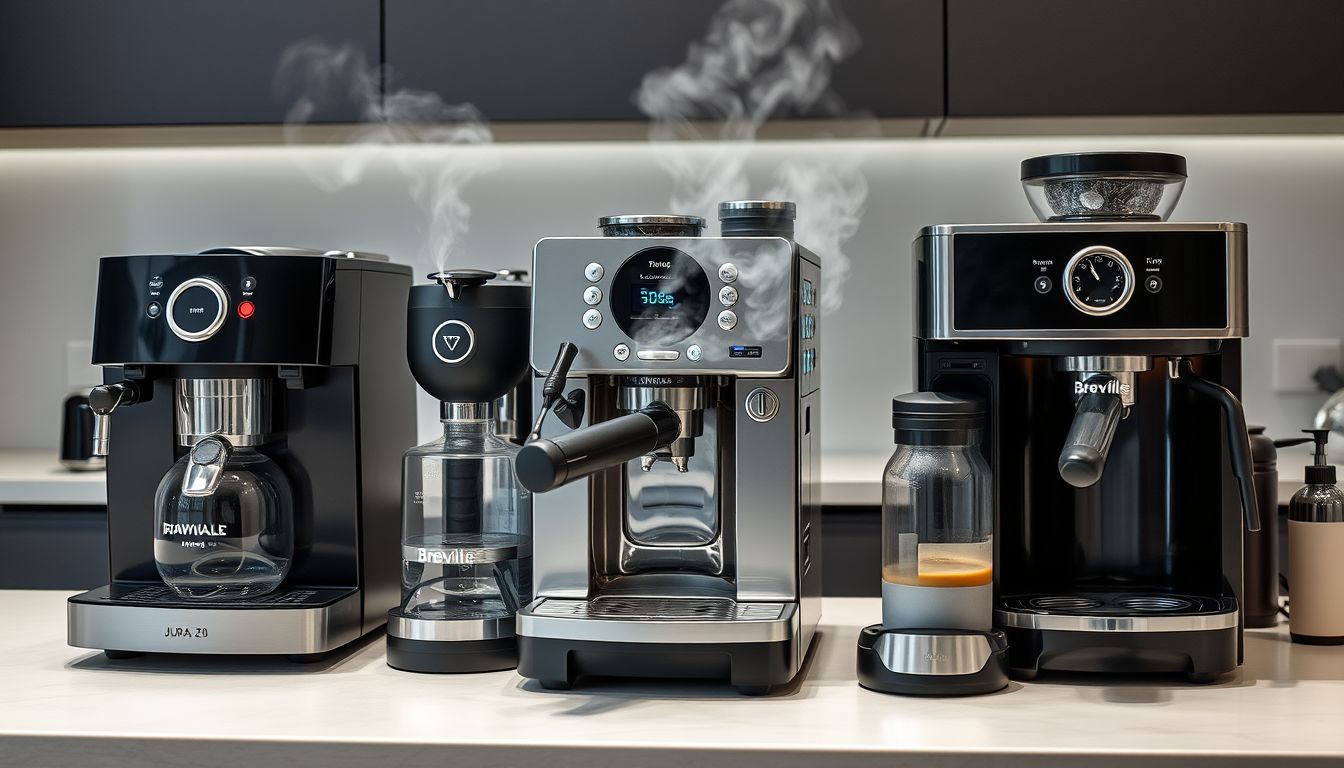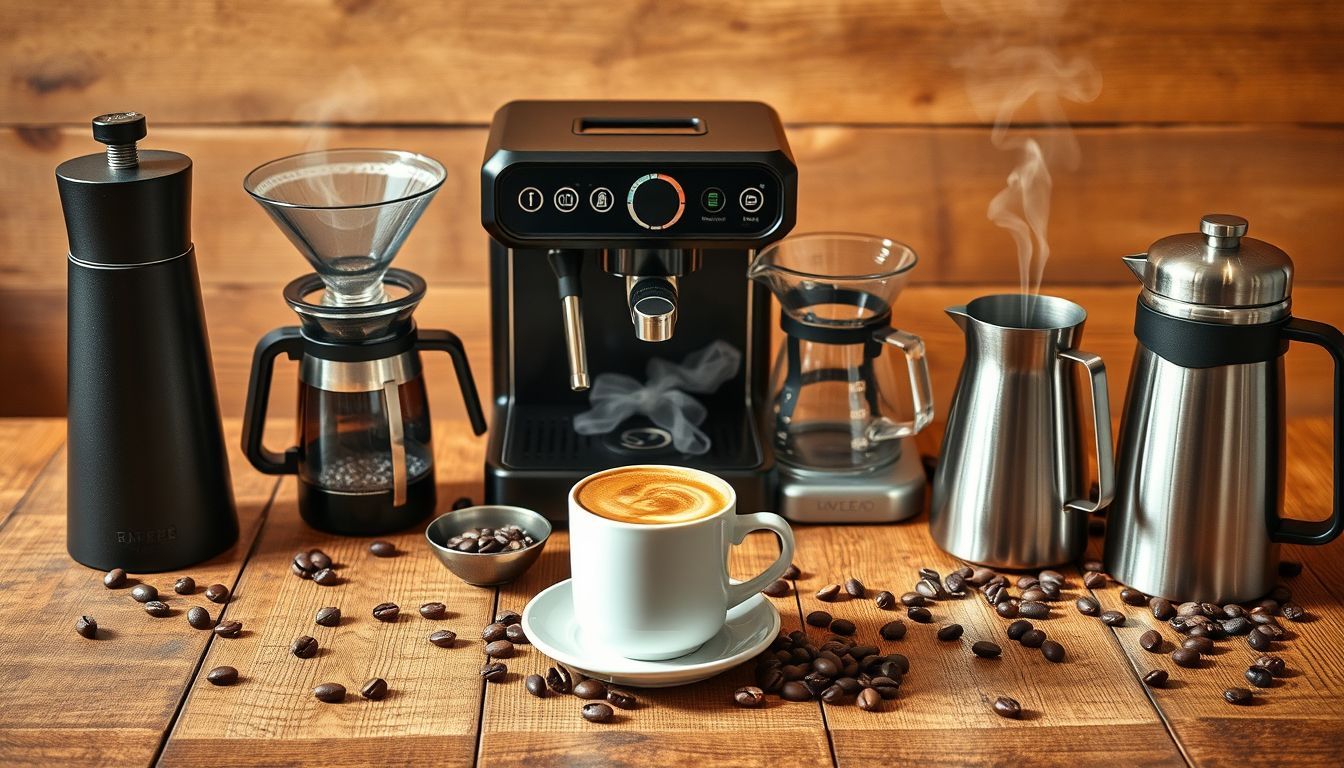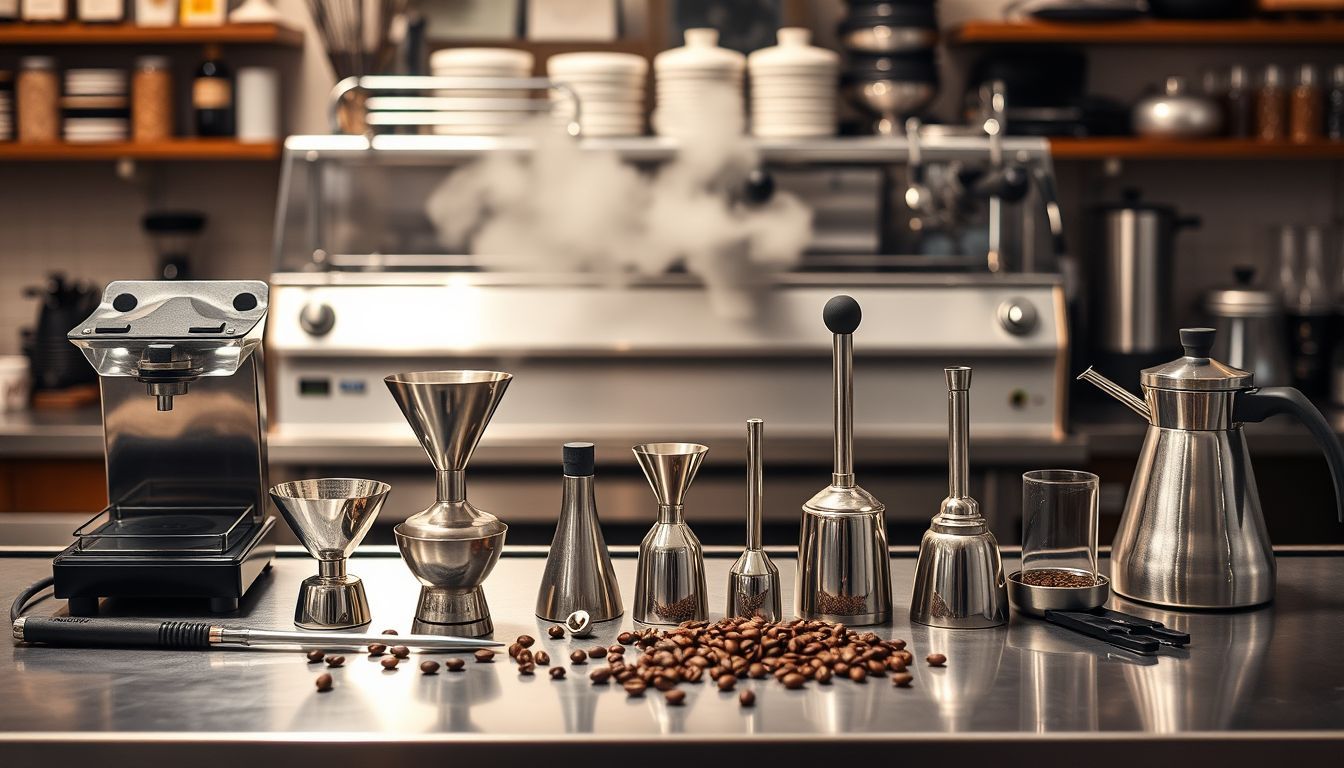7 Coffee Makers That Clean Themselves (Yes, Really)
Self-cleaning coffee makers sound too good to be true—and mostly they are. But these 7 machines actually deliver on the promise of automated maintenance without sacrificing coffee quality.

7 Coffee Makers That Clean Themselves (Yes, Really)
Let me start with a confession: I'm a skeptic when it comes to "self-cleaning" anything. In my experience, products that promise to clean themselves usually do so with the same enthusiasm as a teenager cleaning their room—technically accomplished, but you wouldn't want to look too closely at the results.
But here's the thing about coffee makers: they desperately need regular cleaning. Coffee oils turn rancid, mineral deposits clog internal components, and bacteria love the warm, moist environment that brewing creates. The average coffee maker harbors more germs than a toilet seat—a fact that should horrify anyone who's ever skipped their weekly cleaning routine (which, let's be honest, is most of us).
As someone who's spent over a decade analyzing coffee equipment and watching the industry's obsession with convenience features, I've seen countless "self-cleaning" claims that range from mildly helpful to outright fraudulent. Most coffee makers with cleaning cycles are about as self-cleaning as a dishwasher—they'll run a cycle if you load them with cleaning solution and press the right buttons, but they won't actually maintain themselves.
But buried in the marketing hype are a few genuine innovations—machines that actually automate meaningful portions of their own maintenance. These aren't just marketing gimmicks; they're engineering solutions to real problems that plague coffee equipment. The key is understanding what "self-cleaning" actually means and which machines deliver on their promises.
The Dirty Truth About Coffee Maker Maintenance
Why Coffee Makers Get So Disgusting
Coffee makers are bacterial playgrounds disguised as kitchen appliances. They combine everything microorganisms love: warmth, moisture, organic residue, and dark spaces. Add in the oils from coffee beans and minerals from water, and you've created a perfect storm of contamination.
The Science of Coffee Contamination:
- Biofilm Formation: Bacteria create protective films in water lines
- Oil Rancidity: Coffee oils oxidize and create off-flavors
- Mineral Buildup: Hard water deposits reduce efficiency and harbor bacteria
- Mold Growth: Moisture retention in reservoirs and internal components
The Maintenance Reality
Proper coffee maker maintenance requires:
- Daily: Emptying and rinsing reservoirs, cleaning carafes
- Weekly: Deep cleaning removable parts, wiping down surfaces
- Monthly: Descaling cycles, cleaning internal water lines
- Quarterly: Professional-level deep cleaning of internal components
Most people manage the daily tasks inconsistently and completely ignore everything else. This is why truly self-cleaning features matter—they automate the maintenance that people actually skip.
What "Self-Cleaning" Actually Means
The Spectrum of Automation
Basic Cleaning Cycles: Run water and cleaning solution through internal components (most "self-cleaning" machines)
Automated Descaling: Detect mineral buildup and run descaling cycles automatically
Self-Sanitizing: Use UV light, heat, or other methods to kill bacteria
Maintenance Alerts: Notify users when cleaning is needed
Component Automation: Automatically clean specific parts like grinders or milk systems
The Engineering Challenge
True self-cleaning requires solving multiple problems:
- Detection: Sensing when cleaning is needed
- Automation: Executing cleaning without user intervention
- Effectiveness: Actually removing contaminants, not just moving them around
- Safety: Ensuring cleaning processes don't damage components
- User Experience: Making the process transparent and convenient
The 7 Machines That Actually Clean Themselves
1. Jura Z10 ($3,500): The Swiss Precision Cleaner
The Technology: Integrated Pulse Extraction Process (I.P.E.P.) combined with automatic cleaning cycles for every component.
How It Works: The machine monitors usage patterns and automatically initiates cleaning cycles for the grinder, brewing unit, and milk system. It uses precise water pulses to flush contaminants and has separate cleaning programs for different components.
Self-Cleaning Features:
- Automatic grinder cleaning after every 280 cups
- Milk system self-cleaning after each use
- Brewing unit automatic rinsing
- Programmable descaling reminders with guided cycles
- Self-diagnostic system that detects maintenance needs
Performance Analysis: This is as close to truly self-maintaining as coffee machines get. The cleaning cycles are thorough, automated, and effective. The machine actually monitors its own cleanliness and takes action.
The Catch: Premium pricing and complex internal systems that can be expensive to repair.
2. Saeco Xelsis ($2,800): The Italian Automation Master
The Technology: AquaClean filtration system combined with automatic cleaning protocols for all beverage systems.
How It Works: The AquaClean filter prevents scale buildup while automated cleaning cycles handle oil removal and sanitization. The machine tracks usage and initiates cleaning automatically.
Self-Cleaning Features:
- AquaClean system prevents scale for up to 5,000 cups
- Automatic milk carafe cleaning
- Self-cleaning brewing group
- Automatic rinse cycles
- Maintenance calendar with automated reminders
Performance Analysis: The AquaClean system genuinely reduces descaling needs, while the automated cleaning cycles are effective at maintaining hygiene.
The Catch: Filter replacement costs and complexity of the internal systems.
3. Miele CM 7750 ($2,400): The German Engineering Approach
The Technology: ComfortClean system with removable brewing unit and automated cleaning cycles.
How It Works: The brewing unit can be removed and cleaned in a dishwasher, while internal systems run automated cleaning cycles. The machine monitors water quality and adjusts cleaning frequency accordingly.
Self-Cleaning Features:
- Dishwasher-safe brewing unit
- Automatic milk system cleaning
- Programmable cleaning cycles
- Water quality monitoring
- Self-diagnostic maintenance alerts
Performance Analysis: The removable brewing unit is genuinely innovative—it's the only component that gets truly clean because you can actually see and scrub it.
The Catch: The removable brewing unit requires manual intervention, so it's not fully automatic.
4. Breville Oracle Touch ($2,500): The Smart Automation System
The Technology: Integrated cleaning cycles with smart sensors that monitor system cleanliness.
How It Works: The machine uses sensors to detect when cleaning is needed and automatically runs appropriate cycles. The steam wand has automatic purging, and the grinder has self-cleaning burrs.
Self-Cleaning Features:
- Automatic steam wand purging and cleaning
- Self-cleaning grinder burrs
- Automated descaling cycles
- Smart sensors for maintenance detection
- Guided cleaning with touchscreen instructions
Performance Analysis: The steam wand cleaning is particularly effective, and the grinder self-cleaning actually works to prevent oil buildup.
The Catch: Still requires manual intervention for many cleaning tasks.
5. Ninja Specialty Coffee Maker ($130): The Budget Surprise
The Technology: Built-in cleaning cycle with mineral deposit detection.
How It Works: The machine detects mineral buildup and automatically prompts cleaning cycles. While not fully automatic, it guides users through effective cleaning processes.
Self-Cleaning Features:
- Automatic clean cycle detection
- Guided descaling process
- Self-monitoring for maintenance needs
- Easy-clean design with removable parts
Performance Analysis: Surprisingly effective for the price point. The cleaning cycle actually works, and the maintenance detection is reliable.
The Catch: Requires user intervention to actually perform cleaning—it's more "self-monitoring" than "self-cleaning."
6. Technivorm Moccamaster KBGV Select ($360): The Minimalist Approach
The Technology: Self-regulating heating element that prevents mineral buildup and automatic shut-off.
How It Works: The precise temperature control prevents scale formation, while the design minimizes areas where contaminants can accumulate.
Self-Cleaning Features:
- Scale-preventing temperature control
- Automatic shut-off to prevent overheating
- Minimal internal components to clean
- Easy-access design for manual cleaning
Performance Analysis: This is "self-cleaning" through prevention rather than automation. By controlling temperature precisely, it prevents many contamination issues.
The Catch: Still requires regular manual cleaning, but needs it less frequently.
7. Keurig K-Supreme Plus Smart ($200): The Pod System Solution
The Technology: BrewID technology with automatic cleaning cycles and descaling alerts.
How It Works: The machine monitors usage and water quality, automatically running cleaning cycles and alerting users to maintenance needs.
Self-Cleaning Features:
- Automatic cleaning cycles
- Smart descaling alerts
- Self-monitoring water quality
- Guided maintenance through app
- Automatic needle cleaning
Performance Analysis: The needle cleaning is genuinely useful for pod machines, and the automated cycles are more thorough than manual cleaning.
The Catch: Limited to pod-based brewing, and still requires user intervention for descaling.
The Reality Check: What Actually Works
Genuinely Effective Features
Automatic Steam Wand Cleaning: Actually works and prevents milk residue buildup
Grinder Self-Cleaning: Effective at preventing oil accumulation
Mineral Detection Systems: Genuinely helpful for timing descaling
Automated Rinse Cycles: Simple but effective for daily maintenance
Marketing Hype to Ignore
"Self-Cleaning" Carafes: Still need manual washing
"Automatic" Descaling: Usually just runs a cycle with user-provided solution
"Maintenance-Free" Claims: Nothing is truly maintenance-free
"Antibacterial" Surfaces: Don't eliminate the need for cleaning
The Economics of Self-Cleaning
Cost-Benefit Analysis
Premium for Self-Cleaning Features: $500-1,500 additional cost
Maintenance Savings: $100-300 annually in service costs
Time Savings: 2-3 hours monthly in manual cleaning
Longevity Benefits: 30-50% longer equipment life
Break-Even Point: 2-3 years for most users
The Hidden Costs
Specialized Cleaning Solutions: $50-100 annually
Filter Replacements: $30-80 annually
Increased Complexity: Higher repair costs when things break
Dependency: Reliance on automated systems that may fail
Maintenance Best Practices (Even for Self-Cleaning Machines)
What You Still Need to Do
Daily:
- Empty and rinse water reservoirs
- Clean external surfaces
- Remove and wash removable parts
Weekly:
- Deep clean carafes and accessories
- Wipe down internal accessible areas
- Check for visible contamination
Monthly:
- Verify automated cleaning is working
- Replace filters as needed
- Inspect for wear and damage
Maximizing Automated Features
Use Quality Water: Reduces mineral buildup and extends cleaning intervals
Follow Prompts: Don't ignore maintenance alerts
Quality Cleaning Solutions: Use manufacturer-recommended products
Regular Inspection: Verify that automated cleaning is actually working
The Future of Self-Cleaning Coffee Equipment
Emerging Technologies
UV Sanitization: Using ultraviolet light to kill bacteria
Ultrasonic Cleaning: Sound waves to remove deposits
Smart Sensors: Better detection of contamination
AI Maintenance: Machine learning to optimize cleaning cycles
Market Trends
Integration: Self-cleaning features becoming standard
Affordability: Technology trickling down to lower price points
Effectiveness: Genuine improvements in cleaning automation
User Experience: Better interfaces for maintenance management
Making the Right Choice
Decision Framework
Assess Your Habits: How good are you at manual maintenance?
Calculate Costs: Factor in time savings and maintenance costs
Consider Complexity: More automation means more potential failure points
Evaluate Effectiveness: Not all "self-cleaning" features actually work
The Sweet Spot
For most users, the ideal self-cleaning coffee maker:
- Automates the tasks you're likely to skip
- Alerts you to necessary manual maintenance
- Uses proven cleaning technologies
- Balances automation with simplicity
- Fits your budget including ongoing costs
Conclusion: The Promise and Reality of Self-Cleaning Coffee
The dream of a truly self-cleaning coffee maker remains largely that—a dream. But the machines on this list represent genuine progress toward that goal, automating meaningful portions of maintenance while improving coffee quality and equipment longevity.
The key insight is that "self-cleaning" isn't binary—it's a spectrum. The best machines don't eliminate maintenance entirely; they automate the parts you're most likely to neglect while making the remaining tasks easier and more effective.
If you're someone who consistently forgets to clean your coffee maker, struggles with descaling schedules, or simply values convenience over cost, these machines offer genuine value. The time savings alone can justify the premium, and the improved coffee quality is a bonus.
But remember: no machine is truly maintenance-free. Even the most advanced self-cleaning coffee maker requires some human intervention. The goal isn't to eliminate maintenance entirely—it's to make it so easy and automated that you actually do it.
Choose a machine that matches your maintenance habits, not your maintenance aspirations. If you're already good at cleaning your equipment, a basic machine with good design might serve you better than an expensive automated system. But if you're honest about your tendency to neglect maintenance, investing in genuine self-cleaning features can transform your coffee experience.
Because at the end of the day, the cleanest coffee maker is the one that actually gets cleaned—whether by you or by itself.

Sofia Rossi
I started my career in a world of spreadsheets and boardrooms, but I quickly realized the most interesting data was in the way people interacted when the pressure was on. My novels are my way of analyzing the human heart—the messy, complicated, and often hilarious parts. I write about the lives we lead now, with all the love, ambition, and absurdity that comes with it.


